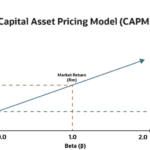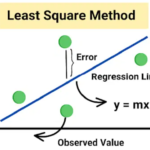
By ATGL
Updated March 27, 2024
You invest money with the expectation that you’ll get consistent, regular, and increasing returns. Unfortunately, we don’t live in a perfect world, and sometimes dividend investing doesn’t yield as much as we expect. Enter dividend growth investing, a strategy that helps maximize your returns over time, even during tough economic times. This article will examine dividend growth investing and share some of the best tips to help you develop a strategy.
What Is Dividend Growth Investing and How Does It Work?
Unlike normal dividend investing, in which you invest in companies that have stocks with the highest dividend yields, dividend growth investing focuses more on the long term. It’s an investment strategy that aims at buying or investing in dividend stocks from companies that don’t just have high yields but have a track record of consistently increasing their yearly and quarterly dividends.
This strategy is about creating a dividend investor portfolio where you allocate your biggest share to companies with stable stocks and consistently raised dividend payouts for their shareholders. This way, you’re guaranteed a reliable and increasing stream of income, regardless of which sector the company belongs to. With dividend growth investing, your focus is on selecting companies likely to weather economic downturns and continue to grow their dividends.
Top 5 Tips for Developing a Dividend Growth Investment Strategy
The dividend growth investment strategy may be straightforward in concept, but for it to work, you must do your due diligence with thorough research. Moreover, these five tips can significantly enhance your success in developing a robust dividend growth investing strategy.
1. Identify Dividend-Paying Companies With Growth Potential
Choosing companies to add to your investment portfolio is the first and most important step. But simply looking at the size, sector, and how long a company has been in operation won’t give you sufficient insight into its dividend history.
A company could have all the characteristics of a well-performing entity, but this doesn’t necessarily reflect its dividend policy. To see if a company has dividend-paying growth potential, analyze these factors:
- Earnings Stability: If a dividend-paying company consistently records income growth and stability, even in the face of changing economic times, then it will have no problem maintaining and increasing its dividend payments over time.
- Free Cash Flow (FCF): This refers to the amount of money a company has left after covering its operational expenses and capital expenditures. This is an important factor as a positive FCF is crucial for funding dividend payments and future growth initiatives.
- Buybacks: A good indicator of a company’s growth potential is whether it purchases back its outstanding shares. This increases the earnings per share (EPS) metric, even if the company’s total earnings remain the same, and the dividend payout ratio improves. Combined, these two factors can create a favorable environment for future dividend growth.
2. Avoid Chasing Dividend Yield
A common misconception is that a high dividend yield (annual dividends per share/price per share) equals a well-performing stock. However, a high yield might signal a problem. Sometimes, high dividend yields can be due to declining stock prices caused by poor performance. Investing in these high-yield stocks without considering the company’s underlying quality can lead to “value traps” in which the stock’s price continues to decline and consequently lowers dividend payouts.
Moreover, some companies facing financial difficulties or uncertainty may artificially boost their dividend yields to attract investors, but this might not be sustainable in the long run. If the company struggles to generate enough earnings to cover dividend payments, it might have to cut or eliminate dividends, leading to a significant loss for investors.
Therefore, it’s best to analyze companies’ dividend growth rates over a certain period of time and invest in those with proven dividend growth. For instance, investing in dividend aristocrats (companies that have had consistent dividend growth for over 25 years) is considerably safer.
3. Consider Dividend Growth ETFs To Protect Against Inflation
A dividend growth investing strategy should protect you from inflation and unpredictable market changes. One way to achieve this is by investing in dividend growth exchange-traded funds (ETFs).
Dividend growth ETFs typically hold diversified portfolios of dividend-paying stocks from various sectors and industries, which helps spread risk. This way, even if one stock performs poorly, other stocks will help balance the impact. Additionally, these ETFs often employ screening criteria that identify companies that demonstrate financial stability, strong fundamentals, and a commitment to returning value to shareholders through growing dividends.
4. Reinvest Earnings at Regular Intervals
A key feature in dividend growth investing is reinvesting your earnings, meaning you use the dividends you receive to buy the same or other dividend-paying stocks. This strategy allows you to take advantage of the compounding effect, with your total investment value accelerating over time.
Nonetheless, to get maximum value, it’s best to do this at regular intervals rather than making timing-related stock reinvestment decisions. This might mean setting up automatic reinvestment plans so you don’t need to do it manually.
5. Monitor Your Diversified Portfolio
Even after you create a strong portfolio using the dividend growth investing strategy, you must continue monitoring it to ensure that it’s helping you achieve your investment objectives. To do this, you can compare your portfolio’s performance against market indices or dividend-based benchmarks and adjust it as needed. For instance, changes in economic conditions or sector-specific challenges may influence the performance of certain stocks in your portfolio, so you must assess whether adjustments are necessary to mitigate potential downsides.
Find Dividend Growth Stocks for Your Investment Portfolio
Becoming a dividend growth investor is a surefire way of ensuring that you earn consistent dividends, even when market conditions aren’t favorable. However, to create a great strategy, you must understand how to develop a portfolio with dividend shares that have the potential to grow, as well as how to leverage tools, such as the Gordon Growth Model. Luckily, Above the Green Line’s Growth Portfolio is the best resource for insight into some of the best stocks to invest in and build wealth through stock appreciation while earning a steady dividend income.






